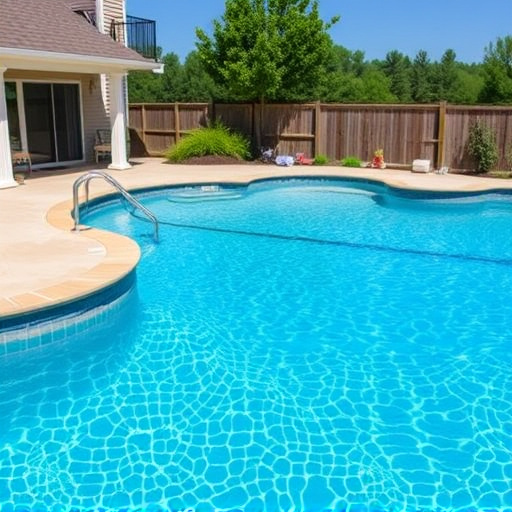Inground pools pose significant safety risks, including accidental drowning. Swimming pool alarms designed specifically for these pools serve as crucial early warning systems, detecting unauthorized access and sounding alerts. With advanced digital integrations, homeowners can remotely monitor their pools via smartphones, providing constant vigilance even when away. These alarms offer peace of mind and enhanced protection, with various options like underwater and surface-mounted alarms, some integrating with existing security systems. Implementing robust security measures, including regular testing, maintenance, and emergency protocols, creates a multi-layered approach to pool safety.
In the world of home ownership, adding an inground pool can bring endless joy and relaxation. However, it also introduces unique safety risks. Understanding these risks is the first step towards ensuring a secure aquatic environment. This article explores the significance of inground pool security, delving into the various types of swimming pool alarms designed specifically for these pools, and providing a comprehensive guide to implementing and maintaining effective safety measures. Stay protected; know your options when it comes to swimming pool alarms for inground pools.
Understanding the Risks: Why Inground Pool Security Matters
Understanding the Risks: Why Inground Pool Security Matters
Inground pools offer a refreshing and enjoyable space for families and friends to gather, but they also present unique safety risks. Unsupervised access to an inground pool can lead to accidental drowning, especially among young children. Swimming pool alarms for inground pools play a pivotal role in mitigating these risks by providing early warning systems that detect potential hazards. These alarms are designed to sound immediately when someone enters the pool area without proper authorization or supervision.
By installing swimming pool alarms for inground pools, homeowners can have peace of mind knowing that their loved ones and guests are safe. These security measures not only deter unauthorized access but also give ample time for intervention if an accident were to occur. In today’s digital era, advanced alarm systems can be integrated with smart home technology, allowing for remote monitoring and control from your smartphone or other devices. This ensures constant vigilance, even when you’re away from home.
Types of Swimming Pool Alarms for Inground Pools
Swimming pool alarms are an essential component of inground pool security, providing peace of mind and added protection for both homeowners and their guests. There are several types of swimming pool alarms available in the market, each designed to cater to different needs and preferences. One common type is the underwater alarm that detects movement within the pool’s water, triggering a loud siren to alert anyone nearby. These alarms are highly sensitive and can be adjusted to fit various pool sizes and depths.
Another option is the surface-mounted alarm, which typically consists of a float and a sensor that monitors the pool’s edge or a designated area. When someone enters the pool without triggering the main switch, the alarm sounds. These alarms offer a visual warning system as well, making them ideal for families with young children. Additionally, advanced swimming pool alarms can be integrated into existing security systems, allowing for remote monitoring and control via smartphone apps or home automation platforms, further enhancing overall pool safety.
Implementing and Maintaining Effective Inground Pool Safety Measures
Implementing and maintaining effective security measures is crucial for any homeowner with an inground swimming pool. Beyond basic fencing and gates, consider advanced safety devices such as swimming pool alarms for inground pools. These alarms can detect unexpected movement in or near the water’s surface, providing an early warning to potential hazards like accidental falls or unauthorized access. Regular testing and maintenance of these systems are essential to ensure they function properly when needed.
Additionally, incorporating self-closing and locking gates, as well as impact-activated sensors, adds layers of protection. It’s important to keep emergency contact information readily available and educate all household members about pool safety protocols. Regularly reviewing and updating these measures will help create a safer environment for everyone enjoying the inground pool.
